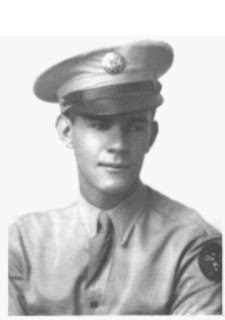By John Berry
Rosedale Park is a historic area in Detroit, Michigan. This article provides a bit of history on the birth of this historic Detroit area. When referring to Rosedale park, I generally consider it to include the areas of Grandmont, Rosedale Park and North Rosedale Park, although many consider parts of Old Redford part of this combined area (myself included). The Grandmont, Rosedale, North Rosedale area basically starts at Greenfield in Grandmont and reaches to Evergreen in North Rosedale Park and is also bounded by West McNichols (or Puritan in Grandmont) and Acacia.
 |
| Historical Sign Usually at the Beginning of Each Street |
The land where Rosedale Park was built was first held by Otis C. Freeman and George Bellamy in the form of 2 separate multi-acre tracts. Mr. Freeman was deeded 80 acres of land in Northwest Detroit by President Andrew Jackson in October of 1835. These were likely tracts of vacant land and not part of Detroit at this time. It appears that these were empty country fields given that there was not much between Detroit proper at the time and the City of Farmington at the time. Keep in mind that one of the few spots between Detroit and Farmington at the time was the Botsford Inn, founded in 1836. Mr. Freeman's grant from President Jackson provided as follows below:
 |
| 1835 Grant of 80 acres of Rosedale Park |
In November of 1835, George Bellamy was also deeded 40 acres of land by President Jackson in the same area. These properties would eventually be subdivided giving rise to the development that would occur in later years.
 |
| 1835 Grant of 40 acres to George Bellamy |
Prior to residential development, Rosedale Park was fairly rural. Eventually, in 1916, the Rosedale Land Development Company purchased these lands and developed a majority part of what would eventually become the Rosedale Park Historic District. In 1916, builders, such as those listed below in this article, were marketing Rosedale Park as the place to be. The comparison below describes the differences between the growth of Boston and Detroit, referred to as "Detroit the Dynamo."
 |
| 1916 Article on Development of Rosedale Park |
The slogan used in the development and selling of homes was "Out of the Smoke Zone and Into the Ozone." In 1917, the first residents of Rosedale Park, Mr. and Mrs. Barkley moved into the area. During World War I, there were about 15 families living in Rosedale Park. The houses continued to sell in Rosedale Park and the Firm of Clemons, Knight, Menard and Paul began to market the area to home buyers and builders.
 |
| 1919 Rosedale Park Ad |
According to a book by Bill Hudson and Jack Lillie, entitled A Quarter Century in North Rosedale Park 1 (North Rosedale Park Civic Association 1948), the first families of Rosedale Park were the "Herbert, Frank Day Smiths, Jake Judsons, Weavers, Art Sieberts, Cyril browner, Solars, Patricks, Nylands, Heibys and La Barres." In 1921, Rosedale Park was referenced as the Grosse Pointe of Grand River in advertisements.
The development of Rosedale Park continued on after this point and picked up. During the World War I era, the area had rural mail delivery, well water and there were no streetlights. There was a nursery, called Stahelin's Nursery at 18501 Grand River Ave., where one day Grandland Shopping Center would eventually be built. It is hard to imagine that Grandland was essentially an empty field at that point.
 |
| Rosedale Park Today - 2017 |
Rosedale Park contains upscale brick houses which were mostly developed from the 1920s through the 1940s. As someone who grew up looking at these amazing houses, I always imagined the first owners to be extremely wealthy. The City of Detroit obviously felt the same way and annexed Rosedale Park in 1926, bringing water and sewer to the neighborhood and making the area more attractive to purchasers. Many of the original Rosedale Park homeowners were professionals, such as doctors, engineer, dentists, and accountants, or had white-collar jobs in the growing automobile industry.
The homes built encompassed a number of styles, such as English Tudor Revival, Arts and Crafts, Bungalow, New England Colonial, Colonial Revival, Dutch Colonial, American Foursquare, French Renaissance, Ranch, Cape Cod and others. There was a focus, somewhat, on English styles.











Thank you for posting this. It was very informative.
ReplyDeleteNice article
ReplyDelete